Conversely, vitamins, minerals, and substances like saccharin don't have calories because the body doesn't get energy from them. The [physiological] caloric values of the energy-providing nutrients are: Carbohydrate* = 4 calories per gram. Protein = 4 calories per gram. Fat = 9 calories per gram. Alcohol = 7 calories per gram.. The larger the increase in water temperature, the more energy is stored in the sample; We can calculate the energy in each food sample using the following equation: 4.2 kJ is the specific heat capacity of water, meaning that it is the energy required to raise 1 kg of water by 1 °C; 1 cm 3 of water has a mass of 1 g
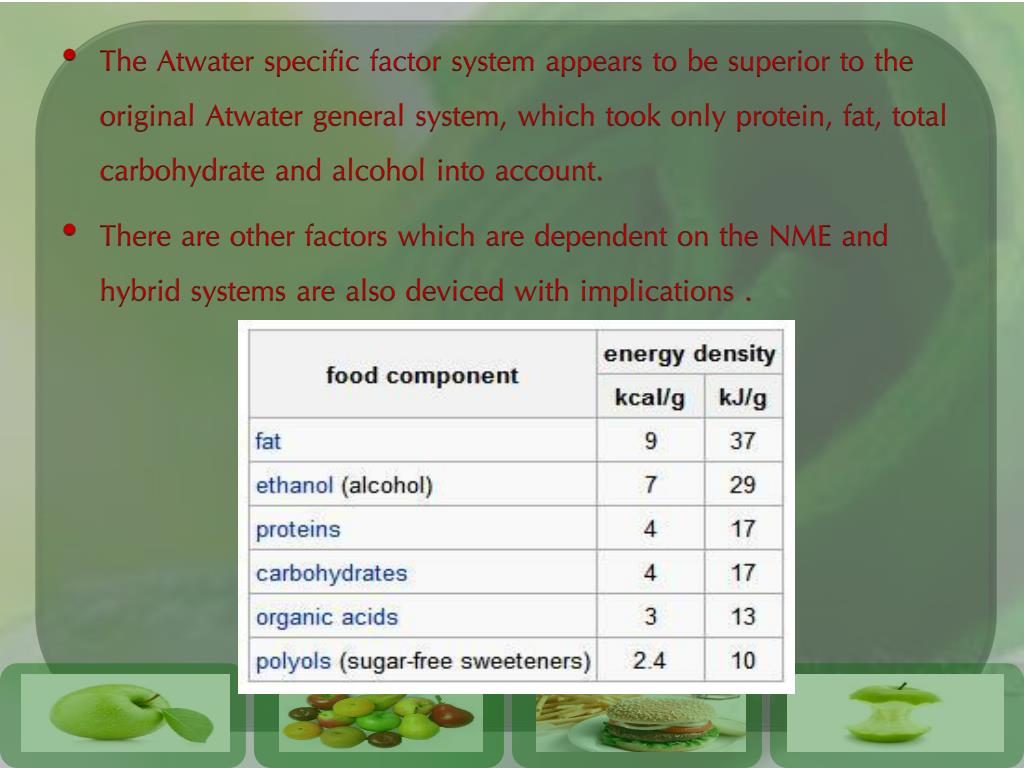
PPT ENERGY VALUE OF FOODS PowerPoint Presentation, free download ID1392978

Experiment. How much energy is there in some foods that you eat? GCSE Science Marked by
.PNG)
Respiration Presentation Biology
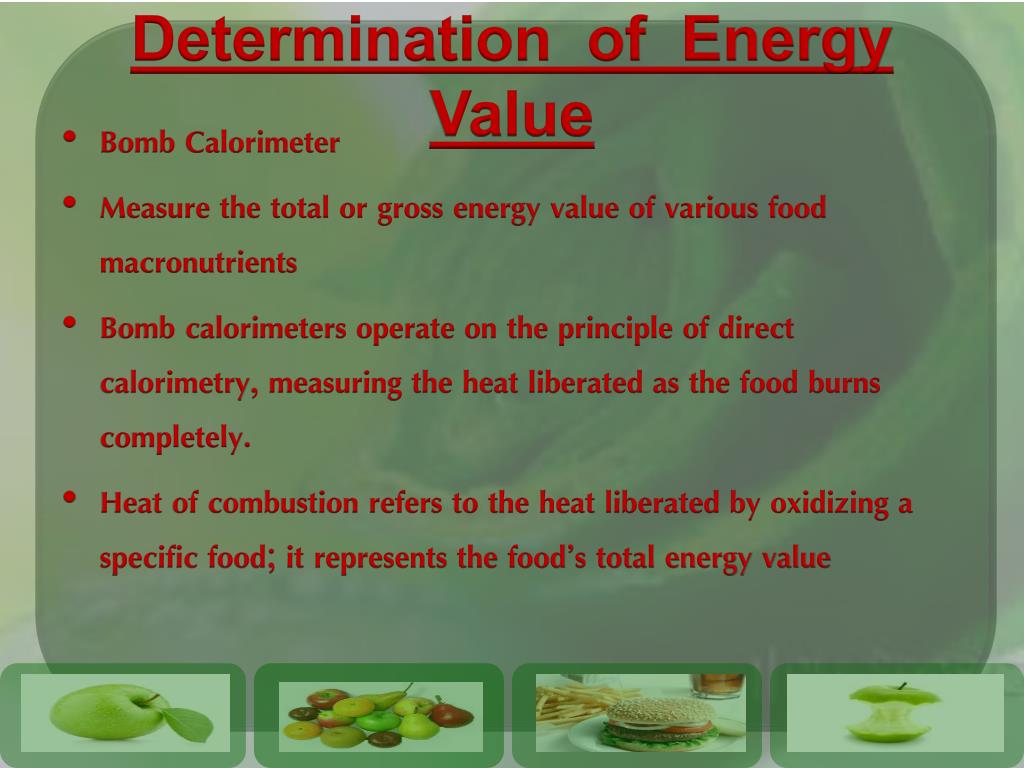
PPT ENERGY VALUE OF FOODS PowerPoint Presentation, free download ID1392978

Thermodynamics Calculate Energy Content of Food from Calorimeter YouTube
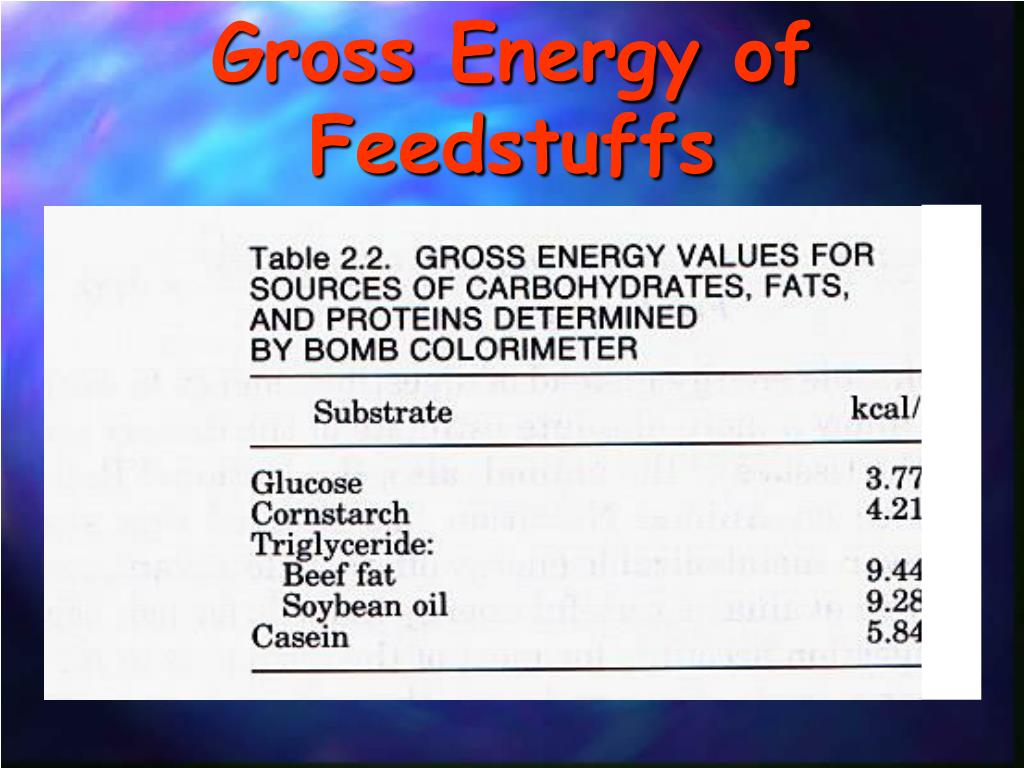
PPT Bioenergetics Calculating Energy Values in Food PowerPoint Presentation ID5792589

Joules, Food Calories, & Kilojoules Unit Conversion With Heat Energy Physics Problems YouTube
[Solved] How do I calculate the total of energy (kcal) for each food item?... Course Hero
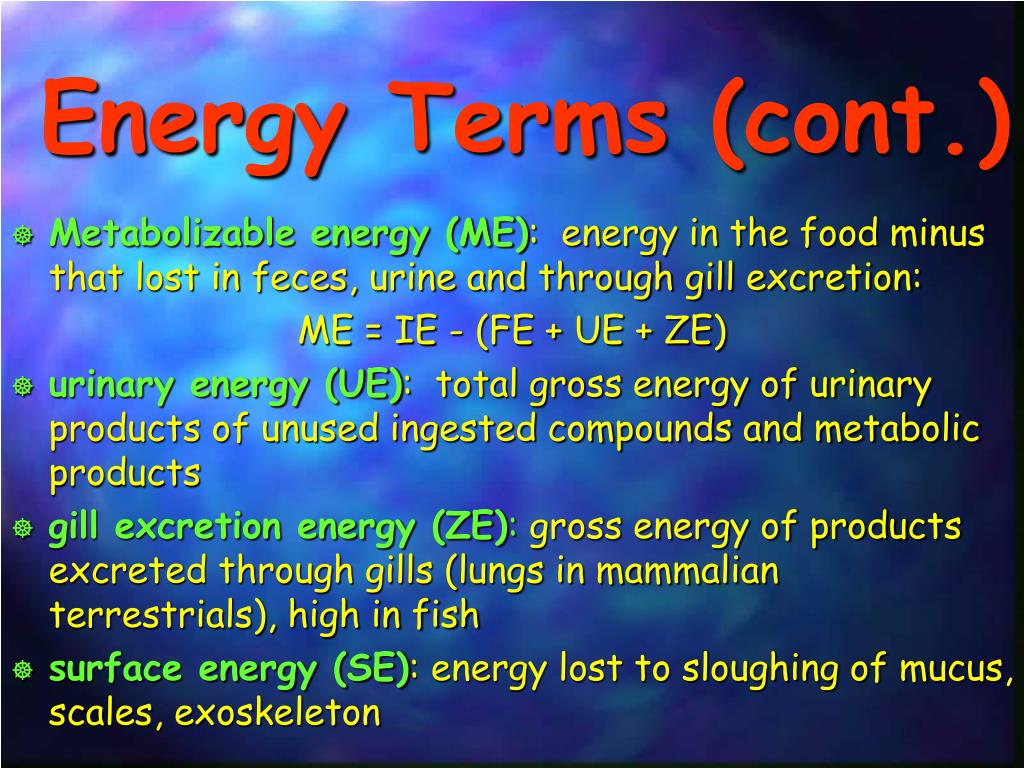
PPT Bioenergetics Calculating Energy Values in Food PowerPoint Presentation ID5792589
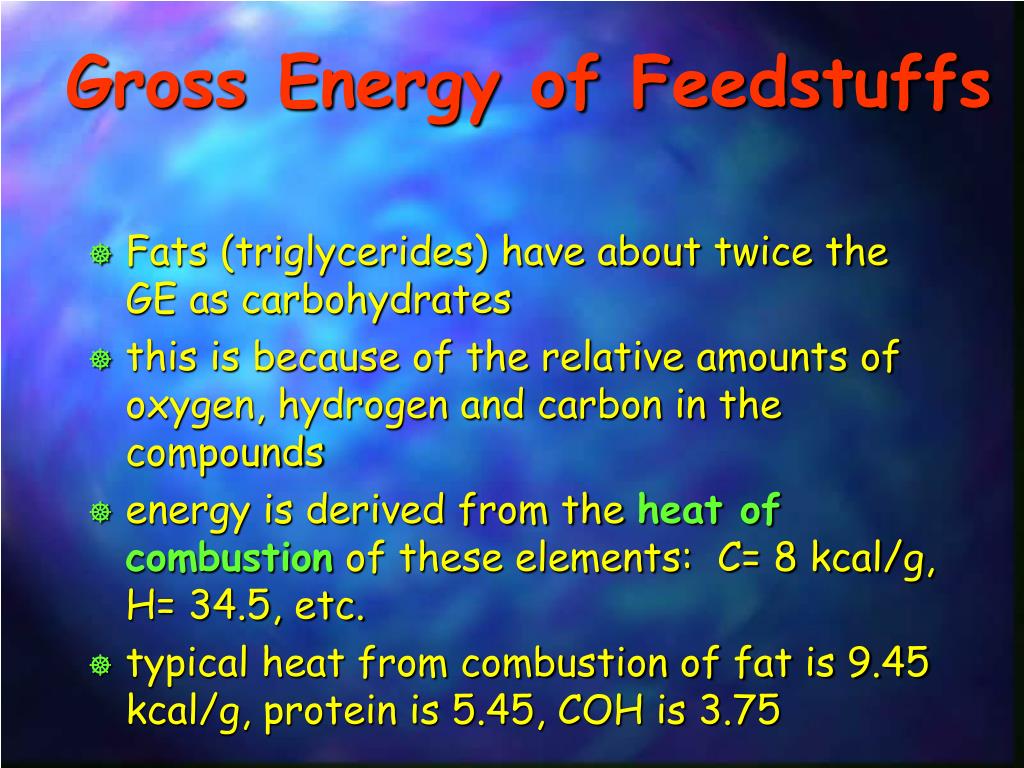
PPT Bioenergetics Calculating Energy Values in Food PowerPoint Presentation ID6743946

Determining the energy in foods ppt download

PPT ENERGY VALUE OF FOODS PowerPoint Presentation, free download ID1392978

Come Calcolare le Calorie del Cibo 11 Passaggi
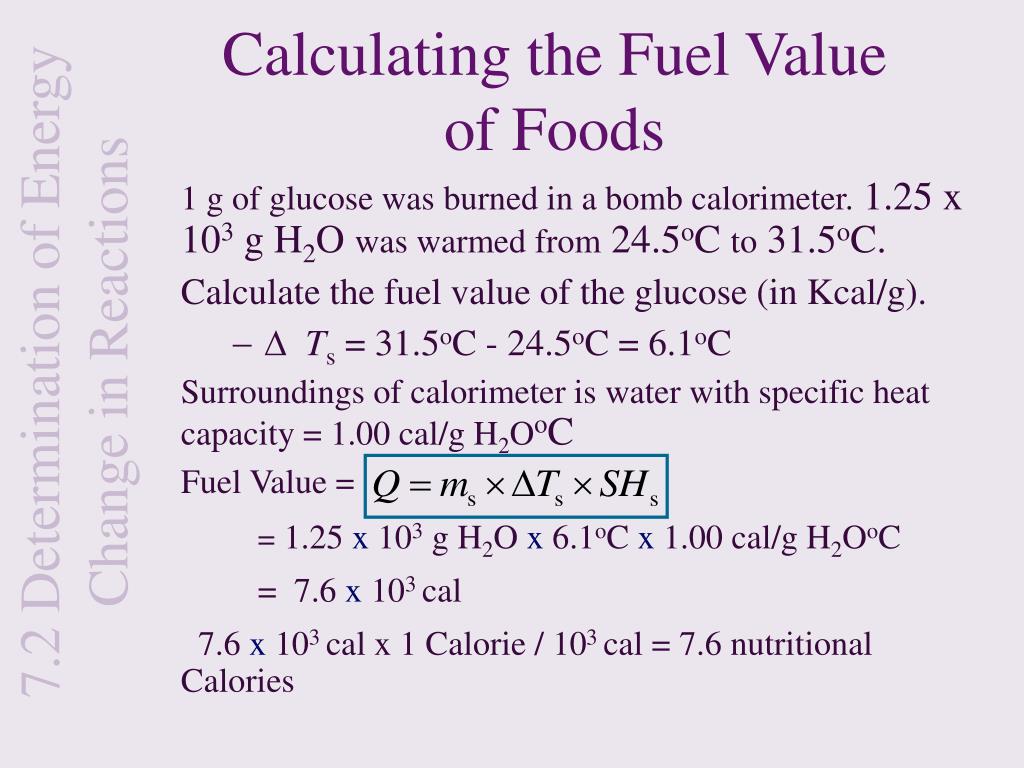
PPT Chapter 7 PowerPoint Presentation, free download ID239015
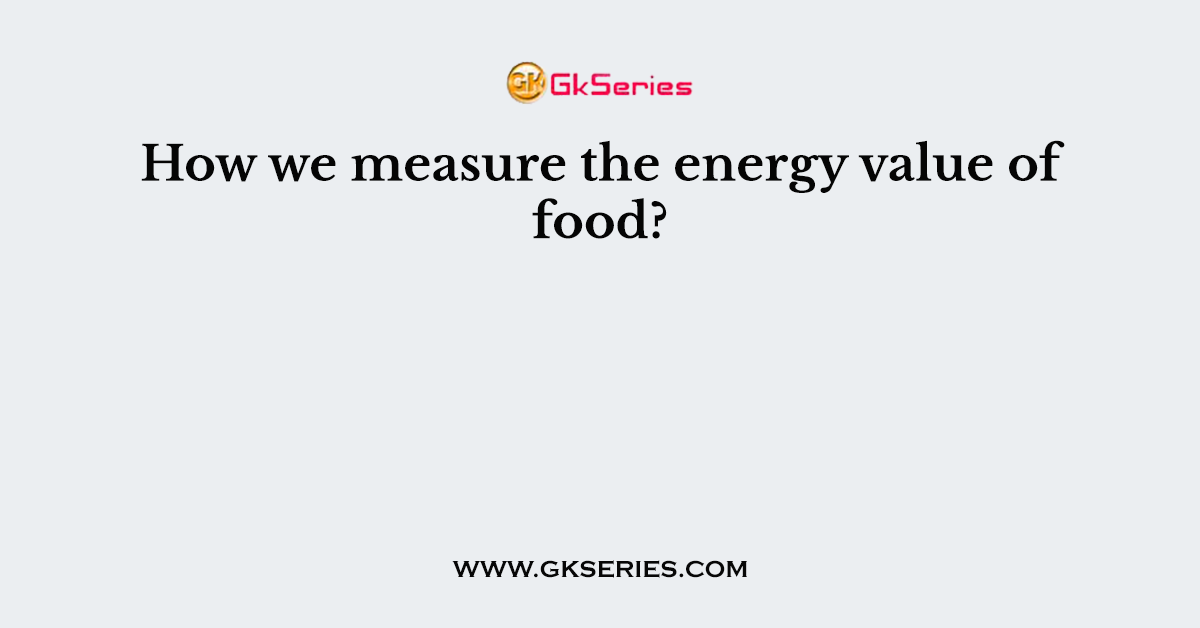
How we measure the energy value of food?

ENERGY VALUE OF FOODS Submitted by SELMA ABDUL

Calculate Energy Content for a Food Using Nutrition Facts YouTube

How to Calculate Food Calories 11 Steps (with Pictures) wikiHow

PPT Chapter 24 Nutrition & Metabolism Lecture 12 PowerPoint Presentation ID6132256
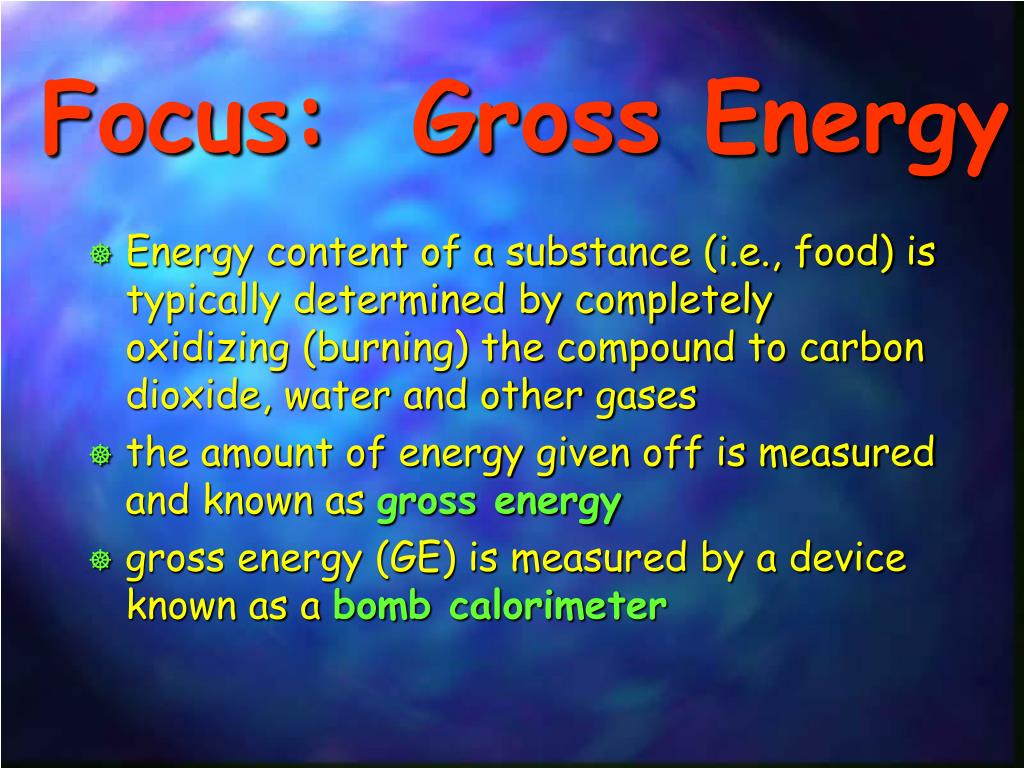
PPT Bioenergetics Calculating Energy Values in Food PowerPoint Presentation ID5792589
Energy. The energy value of food is defined in the Food and Drug Regulations (FDR). In nutrition, energy is measured using "calories". This unit is equivalent to the "kilocalorie" or 1,000 calories used in chemistry. The term "calories" must be used in prescribed nutrient content claims and in the Nutrition Facts table.. To calculate the energy available from a food, multiply the number of grams of carbohydrate, protein, and fat by 4,4, and 9, respectively. Then add the results together. For example, 1 slice of bread with a tablespoon of peanut butter on it contains 16 grams carbohydrate, 7 grams protein, and 9 grams fat : 16g carbohydrate x 4 kcal/g = 64 kca l.